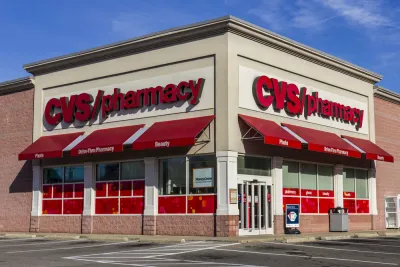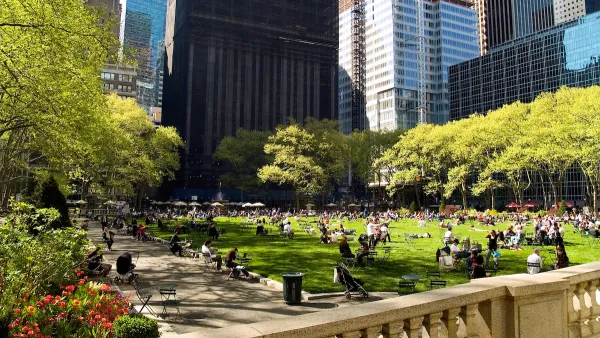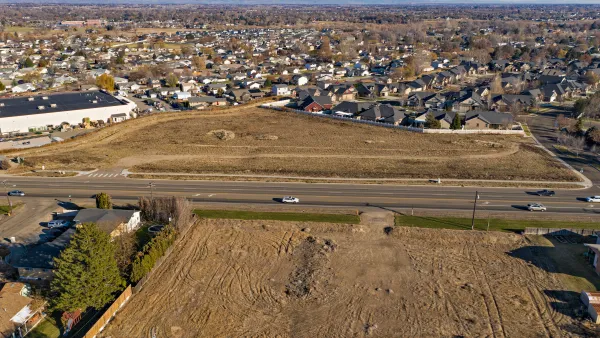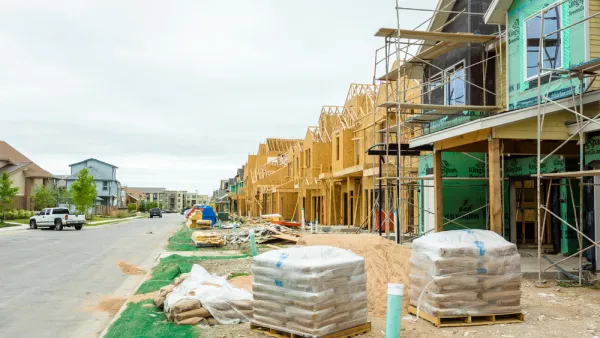A huge public response shows that the booming city is defining a new future with smart growth.

There are nearly 10,000 CVS outlets, but none are in Boise, Idaho. Given the rapid pace of growth in a city where home prices have risen 30 percent in two years, it’s not a surprise that the company has a plan to enter the market.
But that plan, which would destroy 23 units of low-income housing, has run into serious community opposition that is less about CVS and more about the future of Boise.
The conflict began over parking, Joe Eaton reports, which has become something of a theme in the state’s largest city.
“Before breaking ground, the developer applied for a city waiver to put in 48 parking spaces, which is beyond the number allowed based on the size of the building. Neighbors rallied against the proposal, which they argued would have increased traffic, harmed the walkability and charm of the neighborhood, and removed badly needed affordable housing. The developer’s application was met by more than 500 public comments in the first two weeks.”
The enormous public response is indicative of a lively debate about development in a town trying to accommodate rapid growth.
“A city’s values, versus its laws, is at the heart of the CVS battle in Boise, where efforts to encourage denser, more walkable development have been picking up steam. In 2011, the city adopted Blueprint Boise, a 20-year plan to manage growth with the objective of making Boise “the most livable city in the country.” The plan is heavy on smart-growth policies including promoting mixed-use development, open spaces, and a walkable and bike-friendly urban core. But it’s just a policy, not a binding regulation.”
Eaton adds that what’s going on in Boise also reveals something essential about the city.
“But if the CVS dustup demonstrates the downsides of economic growth, it also shows off one of Boise’s key advantages when it comes to fending off unwanted development. The city’s modest size, Windsor said, means that neighborhood associations tend to stick up for each other, even if a proposal wouldn’t affect their area directly. The CVS resistance drew big crowds from multiple groups, and she has little doubt that their drive-thru proposal would have sailed through the Planning and Zoning Commission if so many people hadn’t shown up to oppose it. That, she said, made all the difference.”
FULL STORY: Booming Boise Picks a Fight With CVS

Analysis: Cybertruck Fatality Rate Far Exceeds That of Ford Pinto
The Tesla Cybertruck was recalled seven times last year.

National Parks Layoffs Will Cause Communities to Lose Billions
Thousands of essential park workers were laid off this week, just before the busy spring break season.

Retro-silient?: America’s First “Eco-burb,” The Woodlands Turns 50
A master-planned community north of Houston offers lessons on green infrastructure and resilient design, but falls short of its founder’s lofty affordability and walkability goals.

Test News Post 1
This is a summary

Analysis: Cybertruck Fatality Rate Far Exceeds That of Ford Pinto
The Tesla Cybertruck was recalled seven times last year.

Test News Headline 46
Test for the image on the front page.
Urban Design for Planners 1: Software Tools
This six-course series explores essential urban design concepts using open source software and equips planners with the tools they need to participate fully in the urban design process.
Planning for Universal Design
Learn the tools for implementing Universal Design in planning regulations.
EMC Planning Group, Inc.
Planetizen
Planetizen
Mpact (formerly Rail~Volution)
Great Falls Development Authority, Inc.
HUDs Office of Policy Development and Research
NYU Wagner Graduate School of Public Service




























